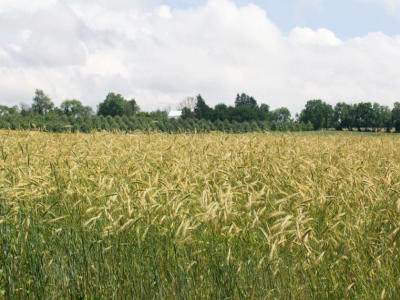By Sam Malriat and Emily
This winter, farmers may not be anxiously scouting their fields for signs of pests or checking for flowers. But no matter the season farming never stops. During these cold and icy months, farmers can be found with their heads in a good book (maybe “Organic No-till Farming” by Jeff Moyer or “Dirt to Soil” by Gabe Brown?), at conferences and planning for the upcoming growing season.
So, what conversations are we having most with farmers this winter? Crop rotation planning!
Here’s what we tell our farmer clients when we get down to brass tacks about crop rotation.
1. Your crop rotation is not perfect…and that is OK!
We wish there were a silver bullet organic crop rotation – one crop rotation you could implement year after year after year. But unfortunately, as all farmers know, there is not. Every crop rotation is unique for each farm depending on the types of crops you grow, your field layouts, desired production and more.
Know that when you work with a crop consultant to develop a crop rotation plan it is a process, not a prescription!
2. Sell the crop before you even think about putting it in the ground.
Buying seed and inputs at the beginning of the growing season is a huge investment. Taking a loan out early in the year may be necessary to cover the cost of supplies; when it comes time to harvest, not being able to sell the crop would leave you in a tough financial position.
Finding a market for your crops before you buy seeds and inputs is vital to planning your crop rotation. Rodale Institute has many resources to find buyers of organic products.
Our website has a handy interactive map tool that shows all the organic farmers, processors, and handlers closest to you to help you identify your markets. Their contact information is provided so you can easily connect with them.
In certain scenarios, you may want to add in a new crop you do not have a market for, like a small grain, hemp, an exotic fruit or dried beans. Start small so your financial investment is small. At the time of harvest, you may be able to find a local market to purchase your product until you can find a buyer to offer you a contract.
3. What did not go well last year? What went well this year?
This advice is best implemented by keeping lots of records. Having a notebook of observations from the season will help you plan for the following year.
Which fields had the best yield? Which crops experienced the largest pest pressure? What types of weeds appeared at the farm?
Having the answer to these questions can help you plan next year so avoid the same issues year after year.

4. Cover. That. Ground!
When developing your crop rotation plan, start by selecting your cash crops and understanding when they will be planted and harvested. From there, you can fill in any time when a cash crop is not planted with cover crops, so that land is never bare. Cover crops can be strategically placed in your crop rotation to suppress weeds, fix nitrogen, and manage water content in the soil.
Getting Started
It’s critical to keep these 4 tips in mind before you even write down your crop rotation plan. Once you feel prepared to get going, you can then start building your crop rotation plan. Here’s how we recommend getting started:
- Prioritize your financial goals, yield goals and crop types for the upcoming year.
- Obtain a map of your operation from your local FSA office, Web Soil Survey or utilize Google Earth.
- Develop standardized field sizes based off of the contour of the land and/or land features.
Click here to see more...